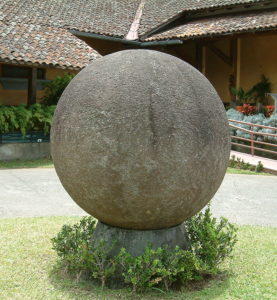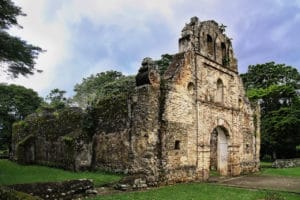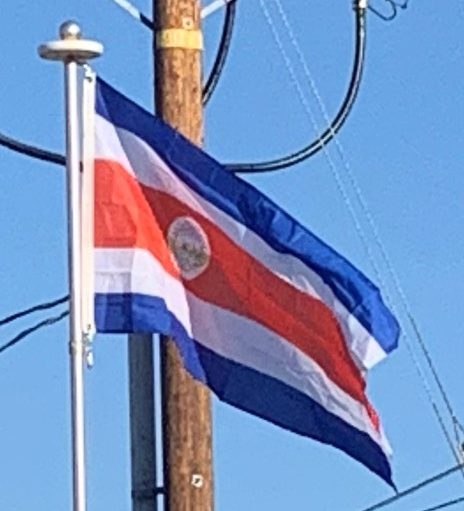Stone tools, the oldest evidence of human occupation in Costa Rica, are associated with the arrival of various groups of hunter-gatherers about 10,000 to 7,000 years BCE in the Turrialba Valley. The presence of Clovis culture type spearheads and arrows from South America opens the possibility that, in this area, two different cultures coexisted..

Agriculture became evident in the populations that lived in Costa Rica about 5,000 years ago. They mainly grew tubers and roots. For the first and second millennia BCE there were already settled farming communities. These were small and scattered, although the timing of the transition from hunting and gathering to agriculture as the main livelihood in the territory is still unknown.
The earliest use of pottery appears around 2,000 to 3,000 BCE. Shards of pots, cylindrical vases, platters, gourds and other forms of vases decorated with grooves, prints, and some modeled after animals have been found.
The impact of indigenous peoples on modern Costa Rican culture has been relatively small compared to other nations, since the country lacked a strong native civilization to begin with. Most of the native population was absorbed into the Spanish-speaking colonial society through inter-marriage, except for some small remnants, the most significant of which are the Bribri and Boruca tribes who still inhabit the mountains of the Cordillera de Talamanca, in the southeastern part of Costa Rica, near the frontier with Panama.
Spanish Colonization:
The name la costa rica, meaning “rich coast” in the Spanish language, was in some accounts first applied by Christopher Columbus, who sailed to the eastern shores of Costa Rica during his final voyage in 1502, and reported vast quantities of gold jewelry worn by natives. The name may also have come from conquistador Gil González Dávila, who landed on the west coast in 1522, encountered natives, and appropriated some of their gold.
During most of the colonial period, Costa Rica was the southernmost province of the Captaincy General of Guatemala, nominally part of the Viceroyalty of New Spain. In practice, the captaincy general was a largely autonomous entity within the Spanish Empire. Costa Rica’s distance from the capital of the captaincy in Guatemala, its legal prohibition under Spanish law from trade with its southern neighbor Panama, then part of the Viceroyalty of New Granada (i.e. Colombia), and lack of resources such as gold and silver, made Costa Rica into a poor, isolated, and sparsely-inhabited region within the Spanish Empire. Costa Rica was described as “the poorest and most miserable Spanish colony in all America” by a Spanish governor in 1719.

Another important factor behind Costa Rica’s poverty was the lack of a significant indigenous population available for encomienda (forced labor), which meant most of the Costa Rican settlers had to work on their own land, preventing the establishment of large haciendas (plantations). For all these reasons, Costa Rica was, by and large, unappreciated and overlooked by the Spanish Crown and left to develop on its own. The circumstances during this period are believed to have led to many of the idiosyncrasies for which Costa Rica has become known, while concomitantly setting the stage for Costa Rica’s development as a more egalitarian society than the rest of its neighbors. Costa Rica became a “rural democracy” with no oppressed mestizo or indigenous class. It was not long before Spanish settlers turned to the hills, where they found rich volcanic soil and a milder climate than that of the lowlands.
Independence:
Like the rest of Central America, Costa Rica never fought for independence from Spain. On 15 September 1821, after the final Spanish defeat in the Mexican War of Independence (1810–21), the authorities in Guatemala declared the independence of all of Central America. That date is still celebrated as Independence Day in Costa Rica even though, technically, under the Spanish Constitution of 1812 that had been readopted in 1820, Nicaragua and Costa Rica had become an autonomous province with its capital in León.
